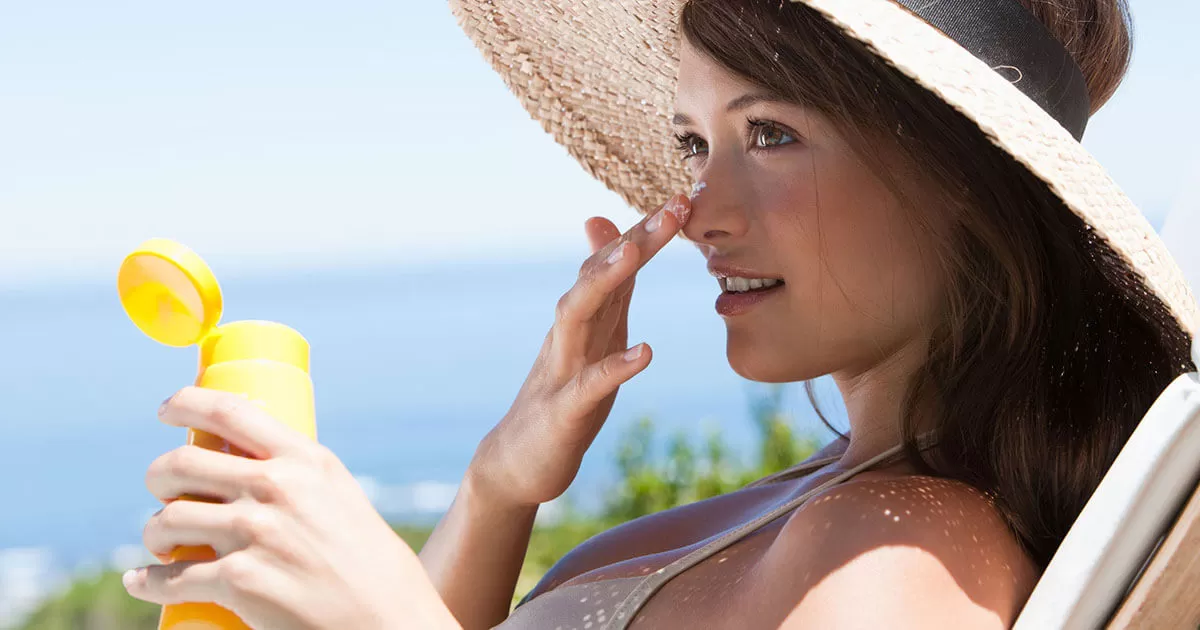What You Need to Know About Sunscreen

More than 2 million people in the US are diagnosed with skin cancer every year. Unprotected skin exposed to ultraviolet (UV) radiation can also lead to several other adverse health effects, such as sunburn, premature skin aging, eye damage, and weakened immune system. The American Cancer Society states that simply staying in the shade is one of the best ways to limit exposure to UV radiation. However, if you are in the sun, it is recommended that you cover up with clothing, hat and sunglasses. Applying sunscreen is another important step in sun protection – here’s what you should know.
UV and SPF – What does it Mean?
The sun gives off two types of harmful ultraviolet rays. UVA rays penetrate into the inner layers of the skin and are known to play a major role in skin aging and wrinkling, while UVB rays are the primary cause of skin reddening and sunburn, and is a key contributor to the development of skin cancer. Sunscreen products contain several ingredients to filter out UV radiation from reaching the skin. They vary in their ability to protect against UVA and UVB – so not all sunscreens are the same.
The effectiveness of sunscreen is measured by its sun protection factor, or SPF. It tells you how long it will take for UVB rays to cause sunburn when using sunscreen compared to how long it will take to cause sunburn without the sunscreen. A simple way to look at this is – if your skin takes 20 minutes to start turning red, using a sunscreen with an SPF of 15 will take you 15 times longer to get sunburn than if you were to not use sunscreen – about five hours of protection.
Most sunscreens with an SPF of 15 or higher sufficiently protects against UVB. The Skin Cancer Foundation and CDC maintain that SPFs of 15 or higher are necessary for adequate protection, whereas the American Academy of Dermatology recommends sunscreen with an SPF of 30 or greater.
Sunscreen Guidelines
Prior to 2012, sunscreen labels contained phrases such as multi-spectrum,sweatproof, waterproof, sunblock, which had no agreed upon definition. These terms are no longer allowed on sunscreen labels, and measures have been put in place to better inform the general public about sunscreen. In December 2012, the US Food and Drug Administration (FDA) implemented new changes to sunscreen labeling.
- You may see the phrase ‘broad spectrum’on sunscreen labels – this indicates that they protect the skin from both UVA and UVB rays according to standardized testing methods.
- Sunscreen labels cannot claim that they protect against skin cancer or early skin aging unless it is a broad spectrum sunscreen with an SPF of 15 or higher. Sunscreens with an SPF of 2-14 must clearly state in their label that they have not been shown to prevent skin cancer or early skin aging.
- If sunscreen labels claim they are ’water-resistant’, they must specify whether they protect the skin for 40 or 80 minutes of swimming or sweating based on standard testing.
- Sunscreen labels cannot claim that they protect against the sun for more than 2 hours without test results demonstrating this.
Sunscreens maintain their original strength for at least 3 years. Some sunscreens have an expiration date – do not use sunscreens past their expiration period. If there is no expiration date, write down the date that you bought it so you will know when to throw them out.
Applying Sunscreen
Sunscreen that is broad spectrum and with an SPF 15 or higher, can help protect your skin from early skin aging and skin cancer, but only when applied correctly. Here are a few pointers:
- Apply sunscreen before heading outdoors. Allow 15 minutes for the sunscreen to become absorbed into your skin.
- Use an adequate amount of sunscreen. The American Academy of Dermatology states that adults need at least one ounce of sunscreen (enough to fill your palm) to fully cover all exposed areas of your body.
- Apply sunscreen to all exposed skin. Don’t forget to generously apply sunscreen to your face, neck, ears, and scalp or head (if you have thinning hair). Apply a lip balm with an SPF of 15 or higher to protect your lips.
- Reapply sunscreen every 2 hours, or immediately after swimming or sweating heavily.
- Apply sunscreen on cloudy days too. Harmful UV radiation can reflect off of snow, clouds and other surfaces.
Caroline Pak is the Medical Editor-in-Chief for Pfizer’s Get Healthy Stay Healthy website.





